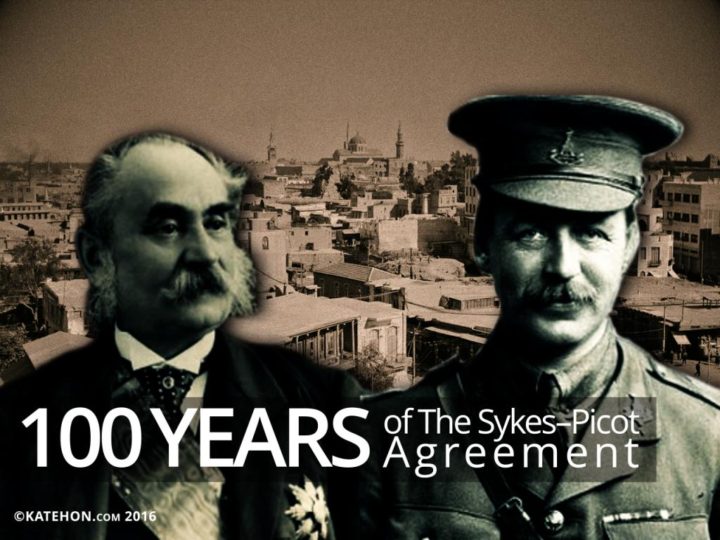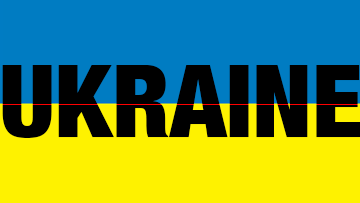What situation is facing the Arab Middle East 100 years following the conclusion of the Sykes-Picot Agreement and division of the Ottoman Empire’s Legacy between France and England? Has the Arab spring left any chance for the survival of the Sykes-Picot Agreement in its traditional form? To find realistic answers to such important questions it is necessary to first pay attention to the situation of the Arab Middle East in the height of World War I and European countries’ policies toward this region.
The historical reality is that since many decades before World War I, European countries used the humiliating phrase, the “sick man of Europe” to describe the Ottoman Empire, though they had not forgotten the memory of the siege of Vienna. Therefore, the alliance between the Ottoman Empire and Germany in the World War I provided them with a golden opportunity to divide the Ottoman Empire and restrict it to those territories which were under the rule of Turks.
By Pir-Mohammad Mollazehi, expert on Indian subcontinent – Iran Review
The hegemonic nationalism which governed vast territories from Eastern Europe to Western Africa in the form of the Ottoman Empire should have come under control. In order to contain Turks, two developments were needed to take place at the same time:
1. The family of Hussein bin Ali, the Sharif of Mecca and Medina, should have been deceived with the promise of power over the entire Arab Middle East to rise against the Ottomans;
2. And to control future outlook of Arab nationalism, it was needed to build a Jewish state in Palestine, so that Arab nationalism would not replace the power of Turkish nationalism.
Developments that followed World War I and division of the Arab Middle East between two conquerors of that war, that is, Britain and France, which took place under the Sykes-Picot Agreement, divided the Arab and Middle Eastern legacy of the Ottoman Empire in such a way that it has remained untouched up to the present time. The rise to power of Israelis and establishment of a Israeli regime in Palestine with Britain’s support and through the Balfour Declaration, restriction of the power of Turks to their historical ethnic domain in modern Turkey with the addition of certain parts of Kurdistan to ensure future ethnic problems for the country, and creating the issue of “Kurds” were among inevitable outcome of the Sykes-Picot Agreement. The British and French order arising from this agreement has lasted for a hundred years, but it seems to be getting close to its end following the rise of the Arab Spring. The Arab Spring has challenged the traditional order in the Middle East. This challenge has two prominent aspects:
1. The religious and sectarian aspect in the form of the Daesh caliphate; and
2. The ethnic aspect around the pivot of the “Kurdish” ethnicity.
Through a historical approach, it is clear that unleashing of these two ethnic and religious capacities in the Arab Middle East has activated forces, which in turn, have made it very difficult for the traditional order arising from the Sykes-Picot Agreement to survive. Therefore, the Arab Middle East is shaping a new order in two opposite directions. This means that on the one hand, it is moving toward unification and integration of the Arab Middle East and the Muslim part of North Africa through Daesh’s Islamic caliphate, while on the other hand, the ethnic and religious sectarian element is pushing it toward disintegration and downsizing of countries. Daesh and the “Kurdish” elements are at the center of these two different orientations. The determining foreign factor in this complicated equation is the United States and its regional ally, Israel. In addition, France and Britain have been trying to protect their interests in the region at any level possible.
In the midst of what is going on in the Arab Middle East, there are also conflicting interests, which have forced almost all big and small countries in the region and at international level to get involved in these developments. Daesh is trying to revive its own version of Islamic caliphate whose central core has been already established in Syria and Iraq through elimination of borders set according to the Sykes-Picot Agreement. The group aims to use that central core to gradually unite the entire Middle East and North Africa. Such a situation would not be desirable to the regional order purported by the United States and Israel and is also at odds with the strategic interests of the Kurdish element.
Under these conditions, the Kurdish element and the Daesh element have taken two separate courses and there are many factors that can determine which one of these elements would finally emerge victorious, while not all of those factors are in control of these two main elements or actors. Important countries in the region, including Turkey, Iran and Saudi Arabia, have entered the scene according to their own reasons and strategic interests. What is called by media as the “proxy war” is just part of the reality and not all of it. In addition, big powers like the United States and Russia, and on their fringes, China and European countries, seek their own strategic interests in the region. There is also a remarkable mixture of conflicting goals. Russia, Iran, Iraq and Syria seek to maintain territorial and national integrity of Syria while countries in the Arab Middle East, the United States, Israel and to some extent, Europe, want to divide it along religious and ethnic lines. The reality of this mixture of conflicting interests and goals is that the United States, Europe, Israel and the Kurdish element have agreed to ethnic disintegration of the Arab Middle East, while Russia, Iran, Iraq and Syria have stuck to the legacy of the Sykes-Picot Agreement.

Intensification of regional rivalries has pitted Saudi Arabia, Turkey and Qatar against Iran, Iraq and Syria. At international level, this intensification of rivalries has pitted the Western world led by the United States against the Eastern bloc led by Russia. In the meantime, Daesh is challenging both claimant fronts and by raising the issue of forming the Arab part of the Islamic caliphate, is not only trying to confiscate the legacy of the Sykes-Picot Agreement, but has also found common goals with Turkey and Saudi Arabia. The chaos resulting from the Arab Spring has raised Turkey’s hope in reviving the Ottoman Empire not only at the level of governance, but also with regard to its increasing influence on the Arab world. Ankara has found Daesh a suitable tool to be used for the realization of this goal. On the other hand, Saudi Arabia shares the goal pursued by Daesh to revive the Islamic caliphate and Riyadh believes that it can use Daesh as a strategic tool to overthrow the existing governments and the product of the Sykes-Picot Agreement. In doing this, Riyadh is trying to fulfill past promises, which were given to Sharif Hussein, at least, by increasing its influence and power.
The truth, however, is that neither Daesh is practically capable of reviving its purported caliphate, nor Saudi Arabia and Turkey are in such a position as to be able to impose on the region their ethnic and religious ambitions. Therefore, a more probable alternative seems to be realization of the historical goals of the Kurdish element and Kurds. At present, Kurds in the region hope that they would weather the ongoing crisis in the Middle East and at the end be able to create their alleged historical homeland. According to the approach taken by Kurds to developments in the Middle East, there can be no alternative order for the European order of the Sykes-Picot Agreement unless it accepts the Kurdish homeland as a reality. Iraq and Syria are at the center of this development just in the same way that the order arising from the Sykes-Picot Agreement could not have been established and lasted for a hundred years in the absence of Israel.
At any rate, it is improbable for Daesh to be anything more than a strategic tool and succeed to revive its purported caliphate. Daesh has the capacity to disturb the existing conditions, but does not have the capacity to design a new order for the Middle East. Such an order will be forged by big global powers. And the Kurdish element will be at the center of the new Middle East order, which will be more American in nature while ensuring strategic interests of Israel.
For original go to: http://www.iranreview.org/content/Documents/Sykes-Picot-Agreement-Turns-100.htm










